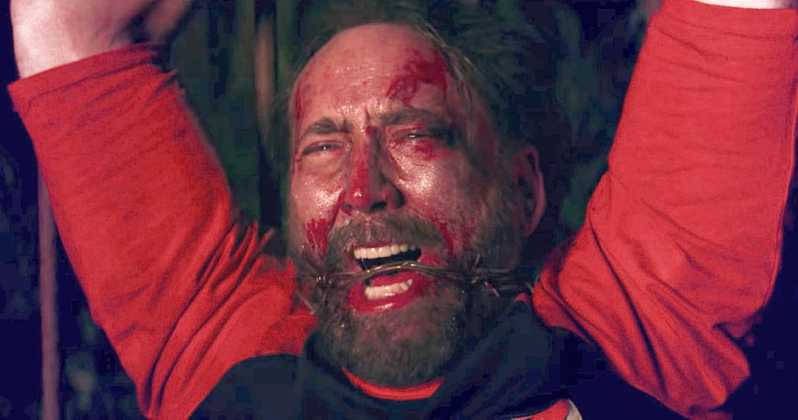“Mandy” premiered at the Sundance Film Festival in Jan. of 2018. (Photo courtesy of Spectrevision)
Jaden Mendola
Connector Contributor
“Mandy,” starring Nicholas Cage and Andrea Riseborough, changed the way I look at film. Phrases like ‘A hallucinatory trip’ or ‘The psychedelic fever dream of a blood lusting metal head’ are perhaps the best way one could describe the provocative and visually stimulating twists and turns this movie takes. “Mandy” could be more accurately described as an experience rather than a movie.
In its simplest form, this 2018 independent film is a classic revenge story. Red (Cage), a lumberjack living in the woodland area of northwestern America, has everything he could want in life: peace, quiet and his true love Mandy (Andrea Riseborough), to enjoy it with.
But after catching the attention of a drug-fueled cult known as the Children of the New Dawn, Red’s quiet life is uprooted, as he is kidnapped and forced to watch Mandy burn before him. Filled with nothing but confusion, bloodlust and rage, Red hungers for vengeance and aims to kill anyone and everyone who is responsible for his pain.
Yet the movie is beautiful and overwhelming, stemming from the outstanding cinematog-raphy of Benjamin Loeb and gut wrenching soundtrack of Jóhann Jóhannsson. Through Loeb’s vision, almost every scene of “Mandy” is drenched in the abrasive neon lighting that makes the film’s visuals so spectacular.
With this movie, there are moments when a murderous Red Miller is drenched in the blood of his enemies, a spectacle of which is only exacerbated by the thick, blanketing red hue that lingers throughout most of the film’s second and third acts. These reds, greens and blues cloak a majority of the scenes in “Mandy,” adding to the intense emotions and overall immersion of this film.
In particular, Jóhannsson, who died shortly after composing this soundtrack, does a magnificent job of capturing the grittiness, heartbreak and anger of Nicholas Cage’s character while also incorporating the popular synth lead style to reflect the 1980’s setting.
Arguably the best song within the film, Jóhannsson’s “Mandy Love Theme” best encapsu-lates these feelings, with its soft, reverb-drenched guitar lead, supported by the ambient backdrop of Jóhannsson’s signature soundscape style.
The contrast of the subtle and emotional undertones of this track, combined with the heavy and brutal scenes it supports, creates a juxtaposition that leaves audiences speechless upon leaving the theater.
Nicholas Cage as Red Miller is quite possibly the best role he’s played in his almost four-decade-long career. This role perfectly complements Cage’s talents. Cage’s strong suit has never really been dialogue but rather his ability to have highly emotive mental breakdowns.
“Mandy” features very little dialogue and has those classic Cage freak-out moments that all of his fans love to see. Unlike some of his earlier work though, these freak-outs don’t carry the same (unintentionally) comedic tone that infamous moments in movies like “Vampire’s Kiss” or “The Wickerman” do.
Instead, Cage translates real, tangible agony through his emotional explosions, reflecting the sheer pain Red is enduring during some of these darker moments. One of the best scenes in the film features Cage emotionally deteriorating after watching Mandy burn.
Frantically transitioning between sadness and anger, the audience finally sees an expression on his face that ensures his entire being has been consumed with the animosity that will drive him to kill. Scenes like this were very powerful and one of the most appealing aspects of the film.
In the end, this is a film that one will either absolutely love for its trippy, arthouse-grindhouse appeal, or not appreciate to the fullest because of its prolonged scenes, minimal dialogue and overall ambiguity. This Blu-ray will surely be on many Christmas list this year.
Final Grade: A

